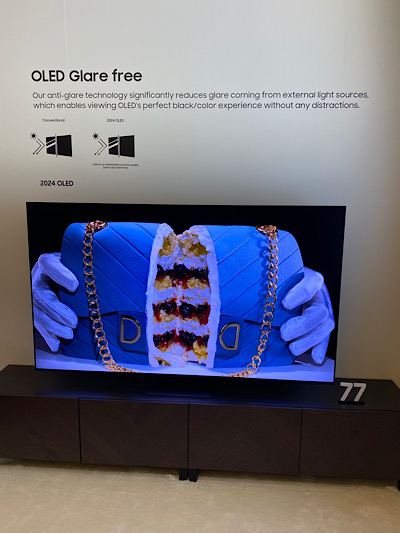
Sound Advice
By Don Lindich
Week 8, 2024
Q. We have a 2013 65-inch Panasonic plasma TV that we still love. It is so relaxing to watch.
We are interested in another 65-inch TV, but do not like the unpleasant brightness and glare of the new TVs. Do you have any recommendations that would make us as happy as our plasma?
-D.S., Martinez, CA
A. No matter the television, most if not all of this unpleasant brightness and glare is caused by the picture settings. Out of the box most TVs are set to what is often called “torch mode” because of the overpoweringly bright, blue picture that is meant to stand out in a showroom. In the store the Vivid picture setting combined with cool color temperature may initially look impressive, but at home it is overpowering. A good start for any television is to set the color temperature to Warm (which is what the broadcast standard specifies) and then experiment with the different picture modes. I suggest starting with the Movie and Standard modes and then tweaking the picture to your liking.
OLED is the spiritual successor to plasma, since OLED also creates an image with self-lit pixels. Samsung just introduced a flagship OLED TV with a non-glare panel, the S95D. I saw this television at the Consumer Electronics Show in January and it was extremely impressive. It would exceed your expectations and make you even happier than your plasma, but at a price. Pricing has not been announced yet, but is expected to be over $3,000 for a 65-inch model.
The Samsung 65-inch Neo QLED QN85C is another excellent choice. Regularly $1,999.99, at the time of column submission it was on sale for $1,299.99. That is quite a bargain for a very high-end TV.
Critically-acclaimed TCL Q-Series televisions provide high performance that ranks among the very best. The 65-inch Q6 is only $599, the Q7 is $799, and the Q8 is $1,299. Owner reviews show incredibly high satisfaction levels, especially with the Q7 model. tcl.com
Readers chime in on indoor antennas: I received a good bit of correspondence from readers relating their own experiences with indoor antennas. Here are two snippets, with more to follow in the coming weeks.
J.P. of Chanhassen, Minnesota writes, “I use the Leaf 30 by MOHU. I read that antennas of this type were developed by the military. It works great. The size is 11 by 9 inches and it uses a couple of stick pins to hold it on the wall. I get over 30 channels and channels 4, 5, 9 and 11 are received just as well as with my cable service. Getting the right location takes a little effort, but is worth it. It comes in handy when my cable service is down.”
Broadcasting industry veteran C.B. of Roseville, Minnesota had a suggestion to change the coaxial cable between the antenna and the TV. “I worked in broadcast TV for over 20 years, nearly all in public broadcasting. Because I live within sight of the Arden Hills antenna farm, I figured a good indoor antenna would suffice. Wrong! Then I learned that most commercial indoor antennas do not provide adequate cabling between the rabbit ears and the TV. I substituted a cable originally used to connect my TV to a cable TV feed, and the difference in reception was immediate. Rescanning for channel sources now gives me more than 100 free channels!”
If you have a piece of 75-ohm cable left behind by the cable company then this is worth a shot. I am going to research where the professional-grade 75-ohm coaxial cable can be purchased, as well.
